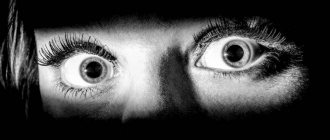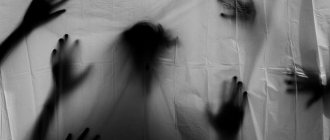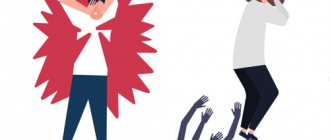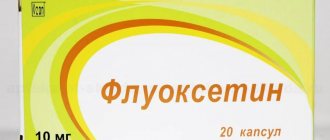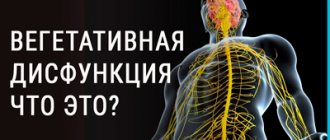Panic attack is an attack of severe anxiety, fear, panic, which is accompanied by certain vegetative (bodily) reactions.
The duration of attacks can vary from several minutes to several hours, averaging 15-30 minutes.
For an anxiety attack to be identified as a panic attack, it must have at least four of the following core symptoms:
- Rapid pulse;
- Sweating;
- Feeling short of air, shortness of breath, difficulty breathing;
- Chills, tremors, internal trembling;
- Pain or discomfort in the left side of the chest;
- Nausea;
- Dizziness, lightheadedness;
- Derealization, depersonalization;
- Fear of going crazy or doing something uncontrollable;
- Fear of death;
- Feeling of numbness or tingling in the extremities;
- Insomnia;
- Confusion of thoughts;
Other (additional) symptoms may be present:
- Abdominal pain,
- Elevated temperature
- Stool disorder
- Frequent urination,
- Feeling of a lump in the throat
- Gait disturbance
- Visual or hearing impairment
- Cramps in the arms or legs,
- Motor function disorder
- High blood pressure.
Patients often talk about the spontaneity (unprovoked) of attacks. However, during the conversation it often turns out that along with spontaneous manifestations of PA, there are also situational attacks that occur in places perceived by a person as potentially dangerous. Such places and situations include:
- Using public transport;
- Staying in a large crowd of people or, conversely, in a confined space;
- And sometimes even, simply, the need to leave your own home.
This list can go on for a long time, but we will stop here.
Panic attacks
Previously, the state of panic attacks was classified as a symptom of vegetative dystonia syndrome. Panic attacks have been considered an independent disease since 1980. They are now included in the International Classification of Diseases. Today, experts are reconsidering the approach to panic attacks: increasingly, doctors attribute the symptoms of the disease to neuroses, and all emerging disorders are considered neurotic disorders of autonomic dysfunction.
Paroxysms of a panic nature affect almost 5% of the population. Residents of megacities are the most vulnerable to the manifestation of this disease. As a rule, the first attacks begin between the ages of 25 and 45 years. A milder form of panic attacks is observed in old age, when the symptoms are mild, and during an attack of panic attacks the emotional part noticeably predominates. Panic attacks can be a consequence of a paroxysm experienced in youth.
Panic attacks can be a single attack or a series. In case of relapse, the disease should be classified as panic disorder. If previously the disease was dealt with exclusively by neurologists, now psychiatrists and psychologists also deal with the patient for these disorders. The symptoms are also of interest to doctors in the fields of pulmonology, endocrinology, gastroenterology and cardiology.
Panic attacks - how to fight, how to cope?
Sarclinic patients often ask questions: “ How to deal with a panic attack , help?”, “How to overcome, how to cope with a panic attack at night, during sleep, during the day, in the morning, in the evening, at night, in the evenings, in the morning, during the day, during falling asleep, when waking up? “ How to get rid of panic attacks , how to relieve an attack?” “Panic attacks - what to do, can they be cured, are they dangerous, where to treat, how to overcome?”
Sarklinik conducts a rehabilitation program for people with panic attacks after treatment. Sarklinik knows how to treat and cure a panic attack . On the website sarclinic.ru you can ask a doctor a question online, read reviews. At the first consultation, the doctor will tell you how to live, what to take, how to treat, how attacks manifest themselves, how prevention works in the future, and how breathing exercises are useful. If there is a comprehensive fight against panic attacks, then a happy life without panic attacks .
Sign up for a consultation. They have contraindications. Specialist consultation is required. Photo: (©) Spaxia | Dreamstime.com \ Dreamstock.ru The people depicted in the photo are models, do not suffer from the diseases described and/or all similarities are excluded.
Related posts:
Nervous exhaustion symptoms signs treatment, exhaustion of the nervous system
Polyneuritis, treatment of polyneuritis, alcoholic polyneuritis, polyradiculoneuritis
Trigeminal nerve, inflammation, treatment, trigeminal neuralgia, symptoms, how to treat
Panic, panic attacks: treatment, symptoms, causes, how to fight, get rid of
Urinary incontinence, treatment of women, men, children, adults, postpartum, neurogenic bladder, spina bifida
Comments ()
Causes of panic attacks
Panic attacks are traditionally provoked by physiological, biological and psychogenic factors. Often there is a combination of factors, one of which causes the initial attack, and others – its relapses.
Physiogenic triggers appear as a result of physical overload, high insolation, acclimatization, meteorological fluctuations, drug use, etc. Some medications can also, to one degree or another, affect the occurrence of panic attacks: cholecystokinin (used in diagnosing the gastrointestinal tract), bemegride (added for induction of anesthesia), some types of steroids.
Patients prone to panic attacks mostly have similar character traits and personality traits. For men, this is an unusually reverent concern for their own health. Women have a desire to be in the center of attention, attracting interest to themselves, drama and excessive demonstrativeness. People who prioritize caring for others over being selfish about themselves have never experienced panic attacks.
Pathogenesis of panic attacks
The causes of panic attacks are explained by several theories. The work of researchers in this matter is significantly complicated by the uncertainty of patients regarding the causes of the attack, as well as the inability to connect the traumatic situation and paroxysm. Because of this, there is no complete certainty regarding the causes of the disease. An additional complicating factor is the rapid progression of panic attacks and their sudden onset.
The most modern approach to the causes of panic attacks is the influx of anxious thoughts on the patient, which is not justified by absolutely anything. Under the influence of these thoughts, adrenaline and other catecholamines begin to be actively produced. As a result, blood pressure increases significantly and blood vessels narrow. Arterial hypertension during panic attacks affects even those people who have an absolutely normal premorbid background. Sodium lactate accumulates in the tissues, the concentration of CO2 gas in the blood decreases, breathing quickens, and tachycardia may appear. As a result of these disorders, a feeling of lightheadedness, derealization, and dizziness occurs.
During panic attacks, the brain activates cerebral chemoreceptors, which are highly sensitive to changes in the composition of gases in the blood. In parallel, noradrenergic neurons become hyperactivated. As a result, feelings of anxiety and fear increase, and the panic attack only intensifies.
How to get rid of panic attacks: causes and treatment
A panic attack is an often inexplicable and unfounded attack of panic, in some cases anxiety or fear, during which a person is unable to control himself and feels real painful symptoms of the autonomic nervous system.
Panic attacks: symptoms and signs
A panic attack can be either spontaneous (sudden and causeless), or situational (in the presence of a real traumatic factor or a factor the appearance of which is expected by the patient) or conditionally situational (when the traumatic factor is aggravated by something: alcohol intake, hormonal disorders, preliminary overexertion or stress, etc.).
The trigger for a panic attack can be a real cause of the environment (various kinds of phobias and fears that have a material reflection: bees, dogs, being at heights, confined spaces, etc.) or a person’s internal feelings (psycho-emotional or physical stress), as well as the cause may lie in the depths of a person’s subconscious, his thoughts, imagination.
It has been proven that every twentieth person on the planet is susceptible to panic attacks to varying degrees, regardless of social status, income level or nationality. Panic attacks, their various manifestations and causes of occurrence are reflected in many cinematic and animated films. For example, the main character in the film “Wanted”, USA, 2008 shows us how the suppression of anger and other negative emotions makes an ordinary ordinary person suffer from attacks of uncontrollable panic; similar panic attacks plague a successful businessman in the film “Treatment”, USA, 2008 , characters from different seasons of the TV series "Doctor House", USA and many others.
At the same time, the vast majority of people suffering from panic attacks in Russia ignore this condition, having experienced a single or subsequent attack, and either postpone diagnosis and treatment, or, in principle, do not turn to qualified specialists for help, underestimating the seriousness of the disease and its consequences.
It is worth mentioning that a panic attack itself does not pose a threat to life; after an attack, which lasts on average from 5 minutes to 2 hours, the human body completely recovers and returns to its original state. But often the negative consequences of regularly recurring panic attacks are expressed for a person who has weakened resistance to stress due to a lack of serotonin and norepinephrine, in a sharp breakdown of the psycho-emotional state with a further inability to maintain balance, and the development of severe forms of nervous and mental disorders. Medical practice indicates the progression of the disease, in which a person can completely abandon his usual way of life, up to the inability to leave the house in fear of a new attack.
It should also be noted that a person who does not control himself during a panic attack, which can happen unpredictably at any time and in any place, exposes himself and others to risk and danger (while driving, performing official duties in production, etc.) . In general, the lack of treatment for patients with panic attacks leads to a significant deterioration in the patient’s quality of life, and also extremely complicates his social adaptation.
During a panic attack, a cyclical self-renewing process starts in the human body. The initial feeling of discomfort causes fear with the further release of a large amount of the hormone adrenaline, which triggers the body’s reserve forces and prepares it for “danger.” In such a state, the heart rate increases and the intensity of breathing increases, hyperventilation of the lungs leads to a decrease in the level of carbon monoxide in the blood, causing a feeling of numbness and dizziness, which in turn causes panic and panic fear, which become the basis for the release of even more adrenaline.
Many people who are susceptible to vegetative crises (panic attacks) and do not have an established diagnosis, mistake their condition for a heart attack or a hypertensive crisis, trying unsuccessfully to correct the condition with well-known medications (Corvalol, Validol, Valocordin, etc.), folk remedies, or calling an ambulance .
The most common symptoms of a panic attack are quite varied; in most cases, at least 4 of them occur simultaneously. During a panic attack, people may experience:
- pain or discomfort in the chest and heart, a feeling of heaviness in the left half of the chest;
- feeling of shortness of breath, suffocation, shortness of breath or difficulty breathing;
- cardiopalmus; increased pulsation and “heartbeat in the ears”;
- sudden sweating, including a feeling of “cold sweat”, or chills;
- uncontrollable trembling in the limbs or throughout the body, as well as tremors and a feeling of “internal trembling”, convulsive phenomena, weakness and “wooliness” in the legs, complete or partial loss of motor functions;
- dizziness, numbness of the extremities, a feeling of “tingling with needles” in the fingers and in the scalp;
- "flushes" of heat or cold throughout the body;
- feeling of faintness, fading consciousness, derealization of what is happening or depersonalization;
- strong fear of death or fear of committing an uncontrollable action, deepest emotional depression or melancholy and horror, hysterical behavior or aggression.
The manifestation of panic attacks in some cases can be a consequence of serious physiological disorders or diseases of the body: vegetative-vascular dystonia, mitral valve prolapse, hyperthyroidism, hypoglycemia, drug or toxic poisoning, depression and others. This indicates the need to contact qualified specialists after the occurrence of such attacks for the purpose of examination and early detection of diseases.
Panic attacks: treatment. How to overcome a panic attack?
A panic attack can be stopped using simple techniques, being prepared in advance for the possibility of its occurrence, not succumbing to the cries of the subconscious about approaching death and stopping the vicious circle of development and increase in panic. There are proven techniques for stopping attacks, in which it is necessary and recommended:
- If possible, take a horizontal position, removing the load from the skeleton and muscles;
- Direct all your strength and focus on regulating your breathing, stabilizing it into a uniform and slow state. To do this, it is convenient to use a paper bag, thick cloth or folded palms. Special techniques and mechanisms for regulating breathing, combating hyperventilation, and breathing exercises will be taught to you by kinesiologists and psychologists at our medical center.
- Try to switch the focus of active attention from physical sensations to an external process or action. There are many methods for this: from the simplest (mental counting from zero to infinity, detailed study of a nearby object with fixation of all small elements, concentration on methodically clenching and unclenching a fist) to specially developed techniques in our medical center, taking into account individual mental characteristics and emotional lability of the patient.
- Do auto training. If you are not currently working on combating panic attacks under the guidance of experienced psychotherapists and psychologists, then use a simple repetition of a calming phrase or prayer to yourself throughout the entire period of the attack.
- Raise your blood glucose levels by drinking sugar-sweetened drinks (except in people with a history of diabetes).
- Try to smile, using muscle memory to transmit positive information to the brain, attracting as many happy and joyful memories from memory as possible.
Our medical center has extensive experience in treating patients with panic attacks. Favorable prognoses in the fight against this type of disorder are, first of all, based on a comprehensive diagnosis of the causes of the disease, with the involvement of specialists in various fields: therapists, endocrinologists, neurologists, cardiologists, psychotherapists, psychologists, etc. and a comprehensive individual approach to treating the patient, combining psychotherapy with other non-drug treatments.
Symptoms of a panic attack
Panic attacks are often a consequence of a mental disorder (schizophrenia, hysterical neurosis, depression, etc.) or somatic diseases (peptic ulcer, neurocirculatory dystonia, coronary artery disease, etc.). Psychological factors determine polysymptoms, as well as the presence of subjective and objective symptoms.
Often panic attacks have no connection with real danger. In this case, the disease takes a sudden start, the symptoms rapidly intensify, and then decline, leaving the patient alone with the state of recovery after the attack. Typically, panic attacks last about 15 minutes. In rare cases, short attacks (about 10 minutes) and long attacks (about 1 hour) have been observed. The most powerful attack is considered to be 5-10 minutes into its manifestation. Patients, recalling this period, complain of the particular severity of the attack, as well as a certain emptiness and depression.
The most common complaints are a feeling of suffocation, pain in the heart, cardiac arrest or excessive activity, breathing problems, lack of air, etc. Symptoms such as paresthesia, dizziness, chills, and sweating are often encountered. At the end of the attack there is polyuria. Patients often talk about cognitive impairment: depersonalization, unclear sound, blurry objects, lightheadedness, and so on. More rare symptoms are vomiting, belching, nausea and other gastrointestinal symptoms.
The first panic attack, with rare exceptions, is expressed by a specific fear of death. When repeated, it takes on a clear form: a person is overcome by the fear of death from some disease or accident. A feeling of anxiety appears, which is difficult to explain in any way, internal tension. Often patients reach a state of passion. Some patients are most susceptible to emotional disorders: feelings of pity, insignificance, hopelessness.
During panic attacks, certain functional disturbances may occur: twisting of the arms, chills, mutism, blurred vision, numbness of the limbs, changes in gait, etc.
Symptoms
The main difference between a panic attack and any other type of anxiety disorder is its sudden and irrational occurrence. This can happen in any circumstances. But subsequently there is a fear of their development in those places or in those situations in which episodes of panic have previously occurred. As a result, a person begins to avoid getting into such circumstances, which can become frightening. In some cases, people lock themselves at home and even refuse to eat, fearing a second attack.
Panic attacks can occur with varying frequencies from once a week to once every 6 months.
The manifestations of a panic attack are quite varied. But all of them can be divided into mental and physical. Panic sets in abruptly, with mental symptoms initially appearing. Patients say that in such situations, dozens of frightening thoughts instantly appear in their heads, they get confused, and after just a few minutes they often cannot even accurately describe what caused the fear. At such moments there are:
- anxiety;
- a feeling of irresistibly impending danger;
- fear of death, madness;
- feeling of a lump in the throat;
- inability to focus on one object;
- a feeling of unreality of what is happening.
This can lead to a strong desire to run and hide or, on the contrary, drive the patient into stupor. This is accompanied by the manifestation of physical symptoms, which are more pronounced in the presence of abnormalities in the functioning of internal organs:
- increased heart rate;
- trembling in hands;
- pallor;
- hot or cold flashes, especially in the face and neck;
- discomfort, tightness, or pain in the chest;
- dry mouth;
- numbness or tingling sensation in the arms and legs;
- sweating;
- increased breathing (shortness of breath), feeling of suffocation;
- abdominal discomfort caused by reflex indigestion and diarrhea;
- weakness, dizziness.
At the same time, all the symptoms quickly, like an avalanche, gain intensity and within a few minutes completely capture the person’s consciousness. If more than 4 symptoms are present, a panic attack is considered to be a full-blown panic attack; otherwise, it is said to be a minor or abortive attack. At the same time, the same person often alternates between large and small anxiety attacks.
Panic attacks can happen both during the day and at night. Moreover, it has been noted that night attacks are most typical for strong-willed people who know how to control their emotions during the day. And since self-control disappears at night, suppressed fears and worries manifest themselves in the form of a sudden attack of anxiety.
The severity of symptoms increases with emotional or physical stress, against the background of fatigue, especially with chronic lack of sleep, use of psychostimulants, coffee, and alcohol. On the contrary, high-quality, complete rest and emotional calm lead to easier attacks.
Thus, panic attacks directly do not pose a serious threat to a person’s life, but they sharply reduce its quality and can even lead to loss of performance and isolation. Therefore, it is important to consult a doctor if you experience attacks of fear and anxiety, especially in combination with the other symptoms described above.
Course of panic attacks
A panic attack can be abortive (less than 4 symptoms) or extensive (more than 4 symptoms). Abortive attacks can occur several times a day. In turn, a full-blown panic attack can manifest itself both quite often (several times a week) and rarely (once every few months). As a rule, patients are susceptible to both types of panic attacks. It is only in exceptional cases that a person is overcome only by extensive attacks.
Patients adapt to the consequences of a panic attack in different ways. For some, panic paroxysms are pronounced (inability to distinguish the inter-crisis period from a panic attack), others feel healthy. In the intervals between attacks, chills, hypothermia, emotional and psychopathological manifestations, headache, diarrhea, constipation, cardialgic symptoms, etc. may be observed.
After several panic attacks, patients experience an inferior lifestyle and a certain limitation associated with avoiding places and situations in which the crisis occurred.
How does an anxiety attack or panic attack occur?
What kind of panic attack clinic ? An anxiety attack, increasing anxiety, or a panic attack can manifest itself in different ways. With a severe panic attack, a pronounced state of panic. With a mild panic attack, there is a slight feeling of internal tension. How long does a panic attack last (its duration)? The attack lasts more often than 10 - 45 minutes. In the practice of sarcastic clinics, there have been cases when a panic attack lasted 1–3 minutes, and there were clinical cases when the attack lasted up to 6 hours. Seizures appear without obvious provoking causes. As patients say, from scratch. In some patients, there is still a clear relationship between the provoking factor and the onset of the attack. Provoking factors may be riding in an elevator, riding in a car, riding in public transport, in the subway, speaking in an audience, an exam, a test, a report, a report, a confined space, an open area. Men or women experience severe fright and often call an ambulance (for example, pulse M ). Work fades into the background. Then, for many months or even years, they go to doctors in such specialties as a cardiologist, therapist, pediatrician, gastroenterologist, urologist, endocrinologist, neurologist, neurologist. There are patients who were treated by the above specialists every day for many years, they brought thick piles with the results of tests, studies, examinations, they did everything possible from the examinations, even studies such as computed tomography (CT), rheoencephalography (REG) , electroencephalography (EEG), nuclear magnetic resonance imaging (NMRI), Holter monitoring, fibrogastroduodenoscopy (FGDS), etc., etc., etc. But there were no results. As the panic attacks were, they remained. All this leads to hypochondria in the patient and disbelief in modern medicine. People constantly feel unwell, they note their poor health. Doctors do not find any serious pathology. The results of tests and examinations usually reveal minor changes, which occur in 70% of people. Patients who have experienced a panic attack once expect it to occur in the future. And this is very bad, since the syndrome of anticipation of a panic attack (PAS) . Later, other neurological and somatic symptoms appear, and consequences develop, such as severe depression. But not everything is as bad as it seems at first glance.
Diagnosis of a panic attack
A study of patients with panic paroxysm clearly demonstrates the presence of most symptoms of autonomic dysfunction. Autonomic disorders can also be detected in the period between attacks. At the same time, neurological studies do not provide any information; no serious neurological abnormalities are detected among patients.
After suffering a panic attack, patients should undergo pathopsychological examination, neuropsychological examination, personality structure study and other psychological examinations.
After panic attacks, various procedures may be prescribed, the list of which directly depends on the clinical manifestations of the disease. Most often, patients are subject to the following studies: ECG, X-ray of the lungs, ultrasound of the heart, 24-hour monitoring of blood pressure and ECG, MRI of the brain, ultrasound of the abdominal cavity, analysis of gastric juice, FGDS, and so on. Additional consultations with specialists in related fields of medicine may be required: pulmonology, cardiology, endocrinology, psychiatry, etc.
Diagnostic criteria
A feeling of discomfort and fear, the manifestation of more than 4 symptoms during repeated paroxysms are the basis for a diagnosis of “Panic attack”. At the first manifestation of the disease, a diagnosis is not made. Also, the diagnosis is questioned if 5-6 of the following symptoms are present: visual impairment, blurred hearing, gait disturbances, cramps in the limbs, numbness of the limbs and temporary paralysis, all-paresis, etc. A single panic attack resulting from a physical or psychological disorder is not interpreted as a disease. overvoltage, as well as getting into a situation where the patient is in real danger. Only with repeated attacks with pronounced autonomic disorders and psychopathological disorders can we talk about the full development of the disease.
Benefits of PA psychotherapy
When turning to a psychotherapist in specialized clinics for the treatment of panic attacks, a person has the opportunity to significantly reduce the time of treatment for the disorder. The work follows specialized protocols that take into account all factors in the occurrence and maintenance of the disorder.
Who is psychotherapy suitable for?
Psychotherapy for panic disorder has no special contraindications . The restrictions relate to general contraindications in psychotherapy, for example, cognitive deficits in humans.
Therapy for panic disorder can be carried out without loss of effectiveness online via Skype. This is convenient for remote areas of Russia, where there are no specialists who successfully use methods of treating panic attacks and panic disorder.
How panic attacks are treated by a psychotherapist
The treatment protocol for panic disorder consists of:
- identifying panic triggers;
- psychoeducation of the patient - an explanation of the ongoing processes from a scientific point of view;
- identifying misconceptions about panic;
- withdrawal of protective behavior;
- exposition.
Exposure is the presentation of frightening situations, the experience of which gives the person a new experience that a panic attack is experienced. It helps reduce panic attacks during neurosis. This is a necessary element of therapy, which, through the experience of fear, under the supervision of a specialist, leads to a good result and recovery.
Panic attack treatment
The main approach to treating a panic attack is the interaction of a psychologist and a neurologist, who jointly try to convince the patient on a subconscious level that a panic attack is not a disease, does not pose a risk to his life and health, and can also be controlled by the patient himself. Changing your perspective on various life situations is one of the most important aspects of recovery.
Antidepressants (tricyclic and tetracyclic) occupy a special place in drug treatment. However, their effectiveness does not appear for the first few weeks, and the symptoms of panic attacks during this period may become more pronounced. After about two months, the stage of maximum effectiveness of the drugs begins. Among the drugs, the most common are cipramil, fluvoxamine, fluoxetine, paroxetine, sertraline.
If desired, the patient can be prescribed various benzodiazepines. They do not increase the symptoms of a panic attack and are more effective from the moment of use, however, these drugs are not recommended for use for more than 4 weeks due to the risk of dependence on them. In addition, they are ineffective for depressive disorders. As a rule, these drugs are recommended for use to relieve paroxysms.
The choice of drug treatment method is entirely individual. As a rule, the course of drug use is 6 months or more. A complete cessation of the use of medications is relevant only in cases where the panic attack has not recurred within 40 days.
Breathing control is the simplest and most effective non-drug therapy. The patient needs to take as deep a breath as possible and hold his breath for as long as possible. After this, you need to exhale slowly. At the same time, you need to try to relax your body and close your eyes. This exercise is recommended to be repeated about 15-20 times. You are allowed to take a short pause of a few standard inhalations and exhalations.
Treatment
Panic attacks disrupt a person’s life and also cause complications. To prevent them and return to a full life without anxiety and fear, you need to seek help from a doctor. Various methods are used in treatment, but the most effective is the combination of psychotherapy with medications.
Is treatment possible at home?
You can cope with attacks yourself by following these recommendations:
- find an “anchor”, a support that will allow you to take a stable position;
- Do breathing exercises regularly, and during an attack you can use some exercises or simply breathe into a paper bag;
- wear a bracelet that can be pulled back during an attack - the blow shifts the focus of attention, distracts from the trigger;
- remember pleasant moments, persuade yourself to calm down, try to shift your attention from the cause of anxiety;
- don’t be shy about asking for help; you can also repeat the names and contact details of your relatives out loud, which will allow you to coordinate those who are trying to help.
These recommendations will only help you cope with the symptoms of attacks, and will also teach you how to control them.
To completely eliminate the causes of the disorder, you need medical help, physical activity, a balanced diet, sleep, and giving up bad habits. Sometimes changing your type of activity, place of residence, or life attitudes helps to cope with anxiety and fear.
Drug treatment
Drug therapy is prescribed by a psychotherapist based on the patient’s condition and the severity of the attacks. Today, pharmacotherapy in the CIS countries is considered the most accessible, but not the most effective, since medications only help eliminate symptoms, while the trigger remains. During treatment, the doctor may prescribe the following groups of medications:
- Sedatives. Their effectiveness in treating panic attacks has not been proven. However, having medications with a sedative effect on hand can reduce anxiety and distract you, since for some, taking medications is a ritual with a powerful sedative effect.
- Tranquilizers. They are able to quickly cope with anxiety symptoms, eliminate fear, and stabilize mood. However, drugs in this group have many contraindications. They are prescribed in short courses, and dosages are selected individually.
- Neuroleptics. Helps cope with vegetative and mental symptoms of attacks.
- Nootropics. The effectiveness of these drugs has not been proven. There is an opinion that the use of nootropics for panic attacks increases mental and autonomic symptoms.
- Antidepressants are a group of drugs that have proven effective in treating anxiety disorders. Doctors prefer selective serotonin reuptake inhibitors, which are relatively safe and have minimal contraindications. The duration of taking antidepressants is individual - the minimum course is a month, and the maximum is 1 year.
Psychotherapy
Psychotherapy together with drug treatment will not only alleviate the condition and help you endure attacks more easily, but will also help you find the cause of anxiety and fear and cope with them. Cognitive-behavioral practice is most effective in treating panic attacks.
During treatment, the psychotherapist will help:
- find the causes of fear, anxiety, as well as risk factors, teach you how to control them;
- analyze thoughts and reasoning that destroy a person;
- learn self-help techniques;
- adjust behavior;
- motivate for recovery;
- resolve internal conflicts.
In addition to cognitive behavioral therapy, the following will also be effective: family therapy, psychoanalysis, art therapy, music therapy, animal therapy. In severe cases, hypnosis may be prescribed.
Phytotherapy
To alleviate the condition during attacks or the appearance of causeless fear and anxiety, herbs that have a sedative effect can be used at home. These include chamomile, valerian, mint, lemon balm, motherwort, St. John's wort, and linden. Based on these herbs, you can prepare soothing teas and drink them with honey.
Herbal medicine is not an independent method of treating panic attacks and can only be used as an auxiliary measure.
Breathing exercises
Breathing exercises help you relax and breathe normally, deeply, which is necessary during an attack. They can be performed anywhere at any time, as no additional equipment is required. The exercise is performed as follows:
- place one hand on your chest, the other on your stomach;
- take a deep breath through your nose, increasing the size of your belly, while your chest should remain motionless;
- As you exhale, tighten your abdominal muscles, slowly releasing the air.
Diaphragmatic breathing helps not only to calm down and relax, but also to stabilize blood pressure and eliminate other vegetative symptoms.
During the exercise, you may experience weakness and slight dizziness, which is normal and is associated with a decrease in blood pressure.
Physical exercise
In the fight against stress and normalization of the functions of the autonomic system, physical activity is effective, which promotes the release of endorphins into the blood. It is useful for people suffering from panic attacks to ride a bicycle, rollerblade, walk in the fresh air, or swim.
Meditation to relaxing, pleasant music is also effective. It is not necessary to have special skills. It is enough to sit on the floor with a straight back and close your eyes. Next, concentrate on breathing and think about the good, that the panic attacks will subside and will no longer bother you.
With proper treatment with psychotherapy, medications, and lifestyle changes, panic attacks can be managed forever.
Forecast
The patient’s personality traits directly affect the course of a panic attack, its severity and duration. Panic attacks become most severe for patients who perceived the first such incident as a real disaster. Sometimes the reaction of health care workers can also contribute to a faster progression of the disease. For example, when hospitalizing a patient in an ambulance, a thought is formed in his subconscious about serious health problems and the presence of serious illnesses.
Starting treatment as quickly as possible contributes to a positive prognosis for recovery. Each attack aggravates the situation, creates limitations in behavior, and is also clear evidence for the patient that the disease exists and is very dangerous. Recovery is possible when two factors coincide: adequate treatment by medical professionals and the efforts of the patient himself. In chronic panic attacks, these factors will contribute to a colossal increase in interpanic time.
Primary appointment with a neurologist: 1850 RUR.
Sign up Online 5% discount when registering from the site
